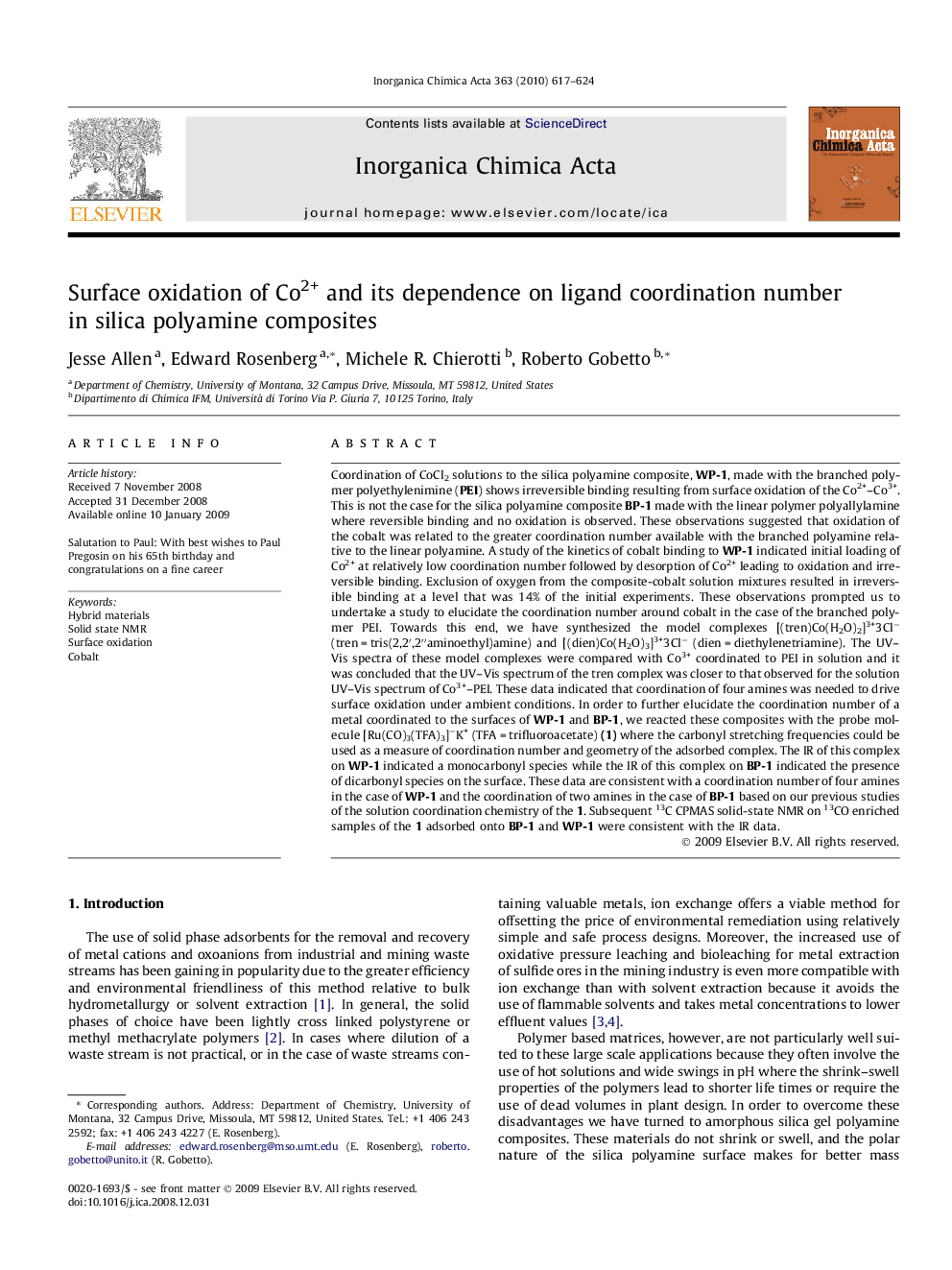| Article ID | Journal | Published Year | Pages | File Type |
|---|---|---|---|---|
| 1312659 | Inorganica Chimica Acta | 2010 | 8 Pages |
Coordination of CoCl2 solutions to the silica polyamine composite, WP-1, made with the branched polymer polyethylenimine (PEI) shows irreversible binding resulting from surface oxidation of the Co2+–Co3+. This is not the case for the silica polyamine composite BP-1 made with the linear polymer polyallylamine where reversible binding and no oxidation is observed. These observations suggested that oxidation of the cobalt was related to the greater coordination number available with the branched polyamine relative to the linear polyamine. A study of the kinetics of cobalt binding to WP-1 indicated initial loading of Co2+ at relatively low coordination number followed by desorption of Co2+ leading to oxidation and irreversible binding. Exclusion of oxygen from the composite-cobalt solution mixtures resulted in irreversible binding at a level that was 14% of the initial experiments. These observations prompted us to undertake a study to elucidate the coordination number around cobalt in the case of the branched polymer PEI. Towards this end, we have synthesized the model complexes [(tren)Co(H2O)2]3+3Cl− (tren = tris(2,2′,2″aminoethyl)amine) and [(dien)Co(H2O)3]3+3Cl− (dien = diethylenetriamine). The UV–Vis spectra of these model complexes were compared with Co3+ coordinated to PEI in solution and it was concluded that the UV–Vis spectrum of the tren complex was closer to that observed for the solution UV–Vis spectrum of Co3+–PEI. These data indicated that coordination of four amines was needed to drive surface oxidation under ambient conditions. In order to further elucidate the coordination number of a metal coordinated to the surfaces of WP-1 and BP-1, we reacted these composites with the probe molecule [Ru(CO)3(TFA)3]−K+ (TFA = trifluoroacetate) (1) where the carbonyl stretching frequencies could be used as a measure of coordination number and geometry of the adsorbed complex. The IR of this complex on WP-1 indicated a monocarbonyl species while the IR of this complex on BP-1 indicated the presence of dicarbonyl species on the surface. These data are consistent with a coordination number of four amines in the case of WP-1 and the coordination of two amines in the case of BP-1 based on our previous studies of the solution coordination chemistry of the 1. Subsequent 13C CPMAS solid-state NMR on 13CO enriched samples of the 1 adsorbed onto BP-1 and WP-1 were consistent with the IR data.
Graphical abstractCobalt(II) adsorbed onto a branched polyamine, grafted onto amorphous silica spontaneously oxidizes in the presence of oxygen to Co(III). When adsorbed onto the silica polyamine composite made with a linear polyamine this does not occur. Spectroscopic studies using model cobalt complexes and a reactive ruthenium probe molecule indicate that octahedral metal centers bind to four amines in the case of the branched polymer and to two amines in the case of the linear polymer.Figure optionsDownload full-size imageDownload as PowerPoint slide
